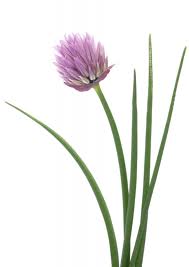Chives are a great tasting addition to many dished. Fresh chives are a very hardy plant that is easy to grow and can tolerate partial shade or full sun.
Not only are chives a delicious addition to any recipe, but fresh chives provide a variety of health benefits. Chives are rich in vitamins A and C, and have been noted by some to aid in digestion. Eastern medicine has utilized fresh chives to treat a variety of ailments including fatigue, high blood pressure, and certain types of tumors. While these claims may not be recognized by western medicine, utilizing chives in everyday cooking can be a part of improving your overall health.
Growing Chives
Chives are easy to grow, even for the casual gardener. You may either plant from seeds or purchase a chive plant.
If you purchase a chive plant, the bulbs should generally be separated and replanted. If you are growing outside, plant the bulbs 9 inches apart in moderately draining soil. If your soil is too compacted, till and mix in a little sand to ensure proper draining.
If you are starting from seeds, you will may either choose to germinate the seeds or plant directly outside. Here are the steps if you choose to germinate chive plants:
1. Find an empty egg carton
2. Fill each section with regular potting soil
3. Plant 1 seed per section
4. Once the seeds have sprouted and reach 2 to 4 inches, you may transplant them outside or to a larger indoor pot. Make sure to plant 9 inches apart
If you choose to plant seeds outside, start in the middle of spring with well-tilled soil. You rows of chives should be started 10 to 12 inches apart, and 9 inches in between the plants in the rows. The same care should be applied to your chive plants as other plants in your garden: water regularly and weed on a consistent basis.
In most soil conditions, chives will survive the winter and return to grow the next spring. If you live in an especially harsh climate, you may need to cover the area where they are planted to help them survive.
Harvesting Chives
There are 2 methods to harvesting chives. You may pull up the entire plant, or cut off the leaves you intend to use. If you plan on retaining your chive garden next year, it is better to cut off the leaves you intend to use. This way your plants will survive the winter and come back in the spring.
To harvest by cutting, simply snip off enough leaves for your use. The cut should be made 1.5 to 2 inches above the soil line to ensure plant health.
Click here for recipes.


